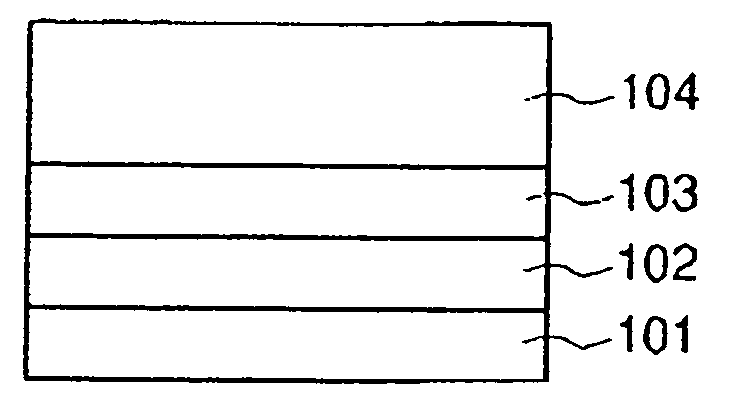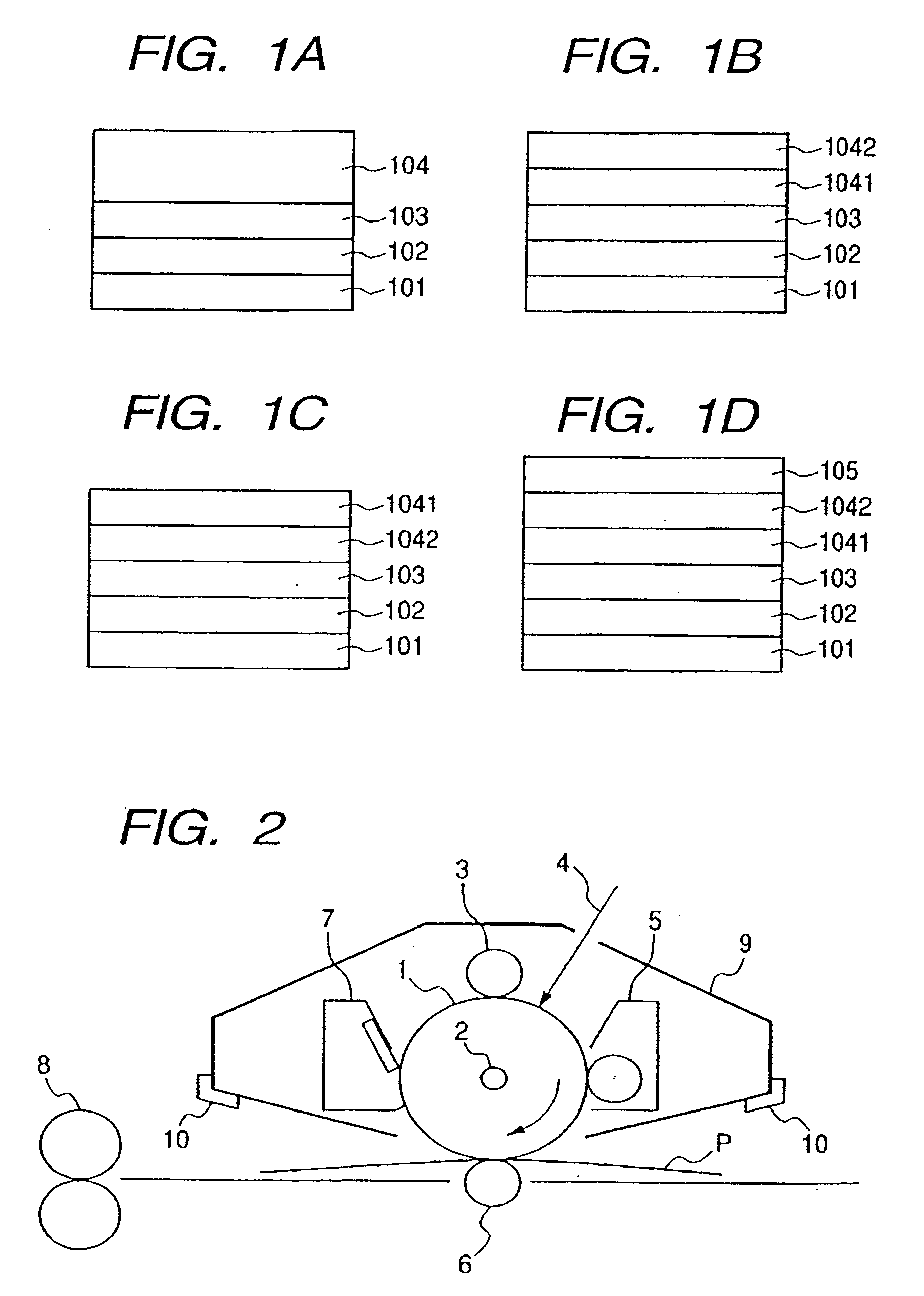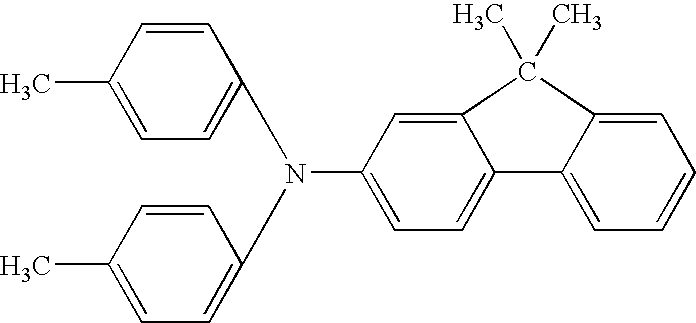Electrophotographic photosensitive member, process cartridge and electrophotographic apparatus
a photosensitive member and electrophotography technology, applied in the direction of electrographic process apparatus, optics, instruments, etc., can solve the problems of high residual potential drawback in initial use and repeated use, and achieve the effects of improving the coating property of the photosensitive layer, improving the charging property, and improving the adhesion
- Summary
- Abstract
- Description
- Claims
- Application Information
AI Technical Summary
Benefits of technology
Problems solved by technology
Method used
Image
Examples
example 1
[0111] An aluminum cylinder with a length of 260.5 mm and a diameter of 30 mm obtained by a hot extrusion in an environment of 23° C. and 60% RH (JIS-A3003, aluminum alloy ED tube, manufactured by Showa Aluminum Co.) was employed as a substrate The surface of the substrate had Rzjis of 0.8 μm.
[0112] In the present invention, the Rzjis was measured according to JIS-B0601 (1994), by employing a surface roughness meter SURFCORDER SE3500, manufactured by Kosaka Kenkyusho Co., under conditions of a feed rate of 0-1 mm / s, a cut-off λc of 0.8 mm and a measured length of 2.50 mm.
[0113] Then, 7.90 parts of TiO2 particles coated with oxygen-deficient SnO2 as conductive particles (powder resistivity: 80 Ωμcm, SnO2 covering rate (weight ratio): 50%), 3.30 parts of a phenolic binder resin (trade name: Plyophen J-325, manufactured by Dai-nippon Inks and Chemicals Inc., resin solid component: 60%), and 8.60 parts of methoxypropanol as a solvent were dispersed for 3 hours by using a sand mill uti...
example 2
[0139] An electrophotographic photosensitive member was prepared and evaluated in the same manner as in Example 1, except for following points. Obtained results are shown in Table 1.
[0140] In the conductive layer, an amount of the TiO2 particles coated with oxygen-deficient SnO2 as the conductive particles was changed to 7.63 parts, and an amount of the phenolic resin as the binder resin for the conductive layer was changed to 3.75 parts. As a result, the conductive layer had a surface roughness Rzjis of 1.7 μm and a volume resistivity of 8×108 Ω·cm.
example 3
[0141] An electrophotographic photosensitive member was prepared arid evaluated in the same manner as in Example 1, except for following points. Obtained results are shown in Table 1.
[0142] In the conductive layer, an amount of the TiO2 particles coated with oxygen-deficient SnO2 as the conductive particles was changed to 7.73 parts, and an amount of the phenolic resin as the binder resin for the conductive layer was changed to 3.58 parts As a result, the conductive layer had a surface roughness Rzjis of 1.6 μm and a volume resistivity of 9×107 Ω·cm
PUM
| Property | Measurement | Unit |
|---|---|---|
| volume resistivity | aaaaa | aaaaa |
| thickness | aaaaa | aaaaa |
| thickness | aaaaa | aaaaa |
Abstract
Description
Claims
Application Information
 Login to View More
Login to View More - R&D
- Intellectual Property
- Life Sciences
- Materials
- Tech Scout
- Unparalleled Data Quality
- Higher Quality Content
- 60% Fewer Hallucinations
Browse by: Latest US Patents, China's latest patents, Technical Efficacy Thesaurus, Application Domain, Technology Topic, Popular Technical Reports.
© 2025 PatSnap. All rights reserved.Legal|Privacy policy|Modern Slavery Act Transparency Statement|Sitemap|About US| Contact US: help@patsnap.com



